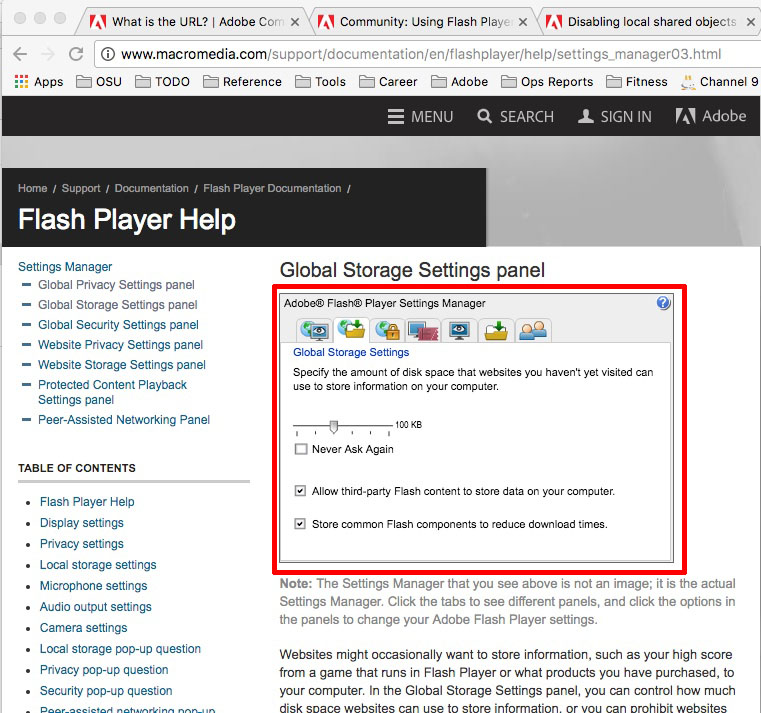Disabling local shared objects
Copy link to clipboard
Copied
I need help with Disabling local shared objects from third-party content. I have tried to fix this issue, but I am not computer savvy. The links I read directs me to the below, and I can't find these on my computer. Please help.
Copy link to clipboard
Copied
What is the operating system (including version) and browser you are using?
Copy link to clipboard
Copied
Word 10
HP Desktop Pavilion.
I use Google Chrome. This issue just started.
Copy link to clipboard
Copied
I have a desktop Pavilion and I use Microsoft Windows 10.
Copy link to clipboard
Copied
The links you provided above take you to the web-based control panel where you can make those changes.
The little boxes, like the one I've highlighted, aren't instructional examples. They're the actual controls for changing those settings. To disable local shared objects, simply set the slider to zero, and choose Never Ask Again. You'll probably also want to uncheck Allow third-party Flash content to store data. That said, these changes may cause some content to refuse to play on your machine.
In the context of 2017, simply disabling Local Shared Objects in Flash Player is largely useless as a defense against marketer's ability to identify and track your behavior. We've significantly restricted the utility of Flash Player as a tool for tracking and fingerprinting over the years, and at the same time, new features in HTML5 and JavaScript provide much more powerful capabilities for marketers and other actors to persist and retrieve tracking identifiers on your machine, and there are completely server-side methods for tracking over which you have no control, and are largely effective (If you're in the US, you can thank your congress person for expanding your ISP's ability to sell data about your Internet activity to third parties).
If you're interested in the gory details, there are a number of great scholarly articles published on the topic from recent years. This one is pretty good: https://securehomes.esat.kuleuven.be/~gacar/persistent/the_web_never_forgets.pdf
The long and short of the story is that you're far better off using your browser's Incognito or Private Browsing mode. Flash Player knows that you're in Incognito mode, and adapts it's behavior to both minimize the utility of data exposed from Flash Player (like Font enumeration) to uniquely fingerprint you, and while Flash Player does store data while running in Incognito mode, it's stored in a unique temporary directory, which is destroyed when you exit your private browsing session. In addition to defending against tracking techniques that use Flash Player, private browsing/incognito mode also addresses tracking techniques that use HTML5 and JavaScript.
If you want to avoid server-side or ISP-based tracking, then you'll also need to consider purchasing access to a commercial VPN service, so that your behavior is obscured to your ISP by routing all traffic to your VPN provider, and the true origin of your traffic is obscured at the recipient.